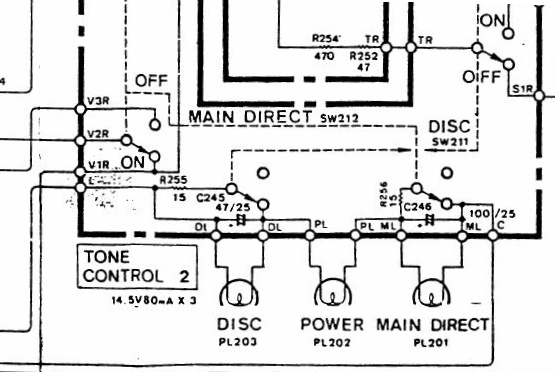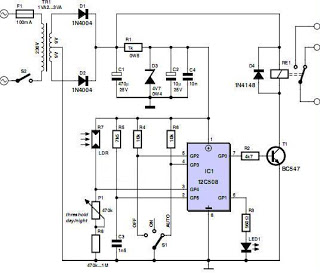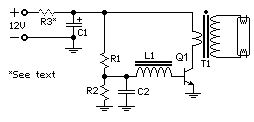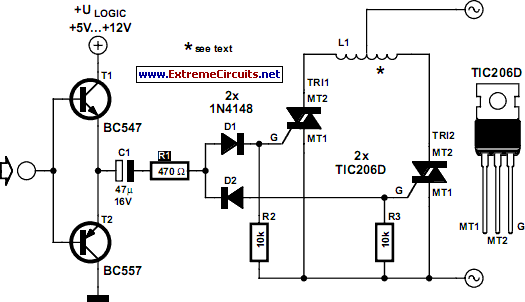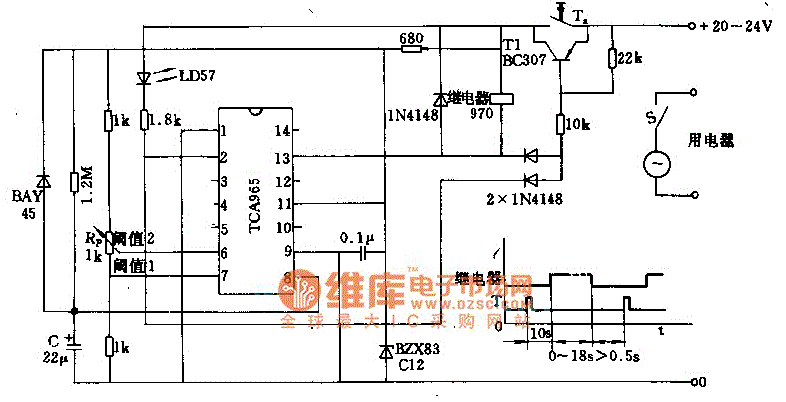
The Custom TRS-80 model 1 Hi res option
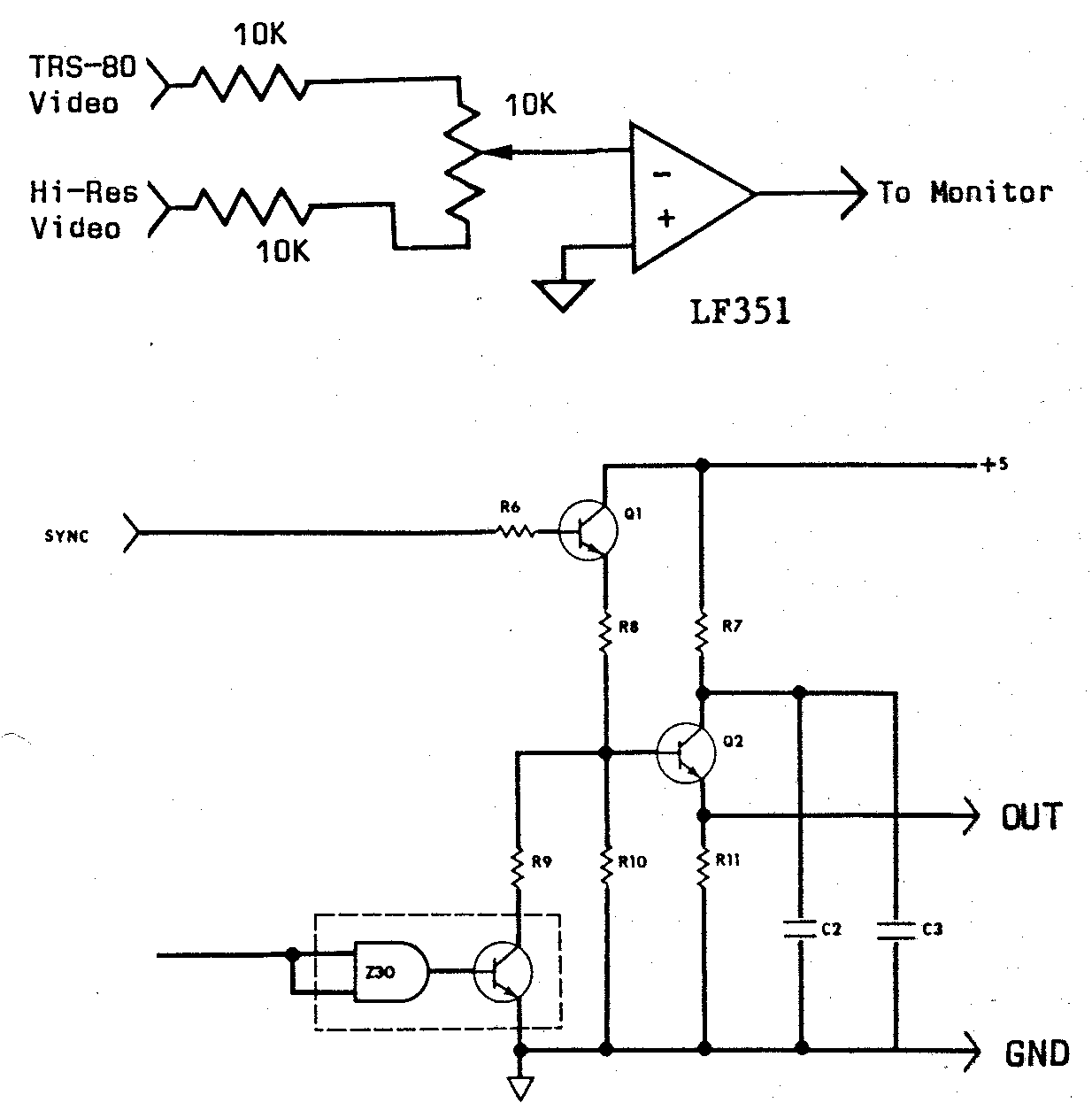
The following project can function either as a standalone plug-in peripheral or as an integrated component of the TRS-80 keyboard unit. The specifications indicate that the hardware, including the power supply and miscellaneous components, will cost under $100 (likely closer to $70 at the time of review), while providing performance that can easily compete with any high-resolution add-on for the TRS-80. However, this project will require extensive wire wrapping or soldering and will occupy a segment of the 16K memory address space when in use. It will not conflict with or replace the top memory block in the expansion box, as it will be addressed from C000 to FFFF or alternatively from 8000 to BFFF. The expansion box is not necessary to operate this memory. The project can render graphics in a coarse graphics mode, utilizing 3 pixels per pixel (a pixel being a picture element) accessed through SET and RESET commands. By minimizing the screen brightness and contrast, the individual dots that constitute the graphic and alphanumeric characters can be discerned, especially with the aid of a magnifying glass. To produce a complete line of letters on the screen, the locations in video memory are accessed twelve times—once for each horizontal pass of the electron beam. During each pass, a row of dots corresponding to a portion of the complete line of letters is sent to the video beam. Each dot, or "undot," activates or deactivates the beam for the brief moment it takes to sweep across 1/384th of the screen. This means that an electronic event occurs for every dot on each line of the screen, allowing for the creation of individual, addressable electronic events for each screen dot. The memory can be populated by the TRS-80 and displayed on the same or a different monitor. The add-on features its own video circuitry but can share the same monitor because the timing characteristics must match those of the TRS-80. This is analogous to a vehicle with four-wheel drive, where all wheels operate cohesively, or a dual-capstan tape recorder that ensures steady contact with the playback head. The accompanying circuit diagram illustrates the complete high-resolution circuitry. There are two methods for constructing this circuit, as the areas shaded in gray are already integrated within the TRS-80. One option is to solder directly to these existing circuits inside the computer, which can save on components and time. Alternatively, the entire circuit can be built separately. The clock is represented in Figure 6-2, utilizing a 10.6445 MHz crystal identical to the one used in the TRS-80, available at Radio Shack for $3.95 through special order. A small trimmer capacitor is included to ensure that the frequency of the high-resolution board aligns precisely with that of the computer. Figure 6-3 depicts the master video countdown chain and timing circuitry, which closely resembles the configuration within the TRS-80, with a few exceptions. The logic for 32 characters per line is absent, as it is unnecessary in high-resolution mode, although normal alphanumeric characters may still be displayed in 32-character mode concurrently with the high-resolution graphics screen.
The project described involves a sophisticated integration of hardware components to enhance the graphical capabilities of the TRS-80 system. The high-resolution circuitry allows for the representation of graphics with increased detail, utilizing a pixel-based approach where each pixel is defined by three individual dots. This configuration permits a fine level of control over the display output, enabling the generation of complex visual information.
The circuitry design emphasizes compatibility with existing TRS-80 systems, ensuring that the new high-resolution capabilities can be leveraged without requiring significant modifications to the original hardware. By utilizing the same clock frequency as the TRS-80, synchronization is maintained, allowing for seamless operation between the standard and high-resolution modes.
The use of a trimmer capacitor in the design facilitates precise frequency alignment, which is critical for maintaining the integrity of the video signal. The detailed video countdown chain and timing circuitry are essential for managing the rapid succession of electronic events required for high-resolution display, ensuring that each pixel is addressed correctly and in a timely manner.
The project is designed with flexibility in mind, offering users the option to either integrate the new circuitry directly into the TRS-80 or construct it as a standalone unit. This approach caters to varying levels of expertise among users, allowing for both straightforward installation and more advanced custom builds.
Overall, this project represents a significant enhancement to the TRS-80's graphical capabilities, providing users with the ability to display high-resolution graphics while maintaining compatibility with existing software and hardware configurations.The following project can either stand alone as a plug-in peripheral, or be integrated as part of the TRS-80 keyboard unit. In either case, the specifications are: The hardware involved in this project, including power supply and miscellaneous hardware, will be under $100 (probably closer to $70 by the time you read this), yet will compete easily with any
high-resolution add-on for the TRS-80. On the negative side, this project will invoive a great deal of wire wrapping or soldering, and will eat up one chunk of 16K memory address space when it is used. It will not actually compete with or replace the top memory block in the expansion box (there is no electronic conflict) but will be addressed from COOO to FFFF.
Alternatively, it may be addressed from 8000 to BFFF. In either case, you do not need the expansion box to run this memory. pixels by 3 pixels (a pixel is a picture element`) for the familiar coarse graphics mode accessed with SET and RESET. If you turn the contrast fully down and reduce the brightness of the screen, the individual dots which make up the graphic and alphanumeric characters can be seen with a sharp eye; a magnifying glass will make the dots very clear.
In order to produce a complete screen line of letters, the locations in video memory are handed to a circuit which actually accesses them twelve times - once for each pass the electron beam makes horizontally. At each pass, a row of dots corresponding to part of the whole line of letters is shifted out to the video beam.
Each dot (or undot`) then turns the hearn on or off for the tiny fraction of a second it takes to sweep across 1/384th of the screen. The point is clear: an electronic event takes place for every dot on every line of the screen. This means that it is possible to create an individual, addressable electronic event for each screen dot.
3. Have the contents of that memory filled by the TRS-80, and displayed on the same or a different monitor. The add-on has its own video circuitry, but can be displayed on the same monitor because step 1 specifies that the timing characteristics must be identical to those in the TRS-80.
It`s like an auto with 4-wheel drive, where all wheels are capable of working together; or a dual-capstan tape recorder, where both capstans pull the tape to ensure steady contact with the playback head. The circuit shown opposite presents the complete high-resolution circuitry. There are two ways of building this circuit since the areas shaded in grey are already present within the TRS-80.
If you wish, you can solder directly to those circuits inside the computer, saving yourself some parts and perhaps a bit of time. Otherwise, the entire circuit can be built separately. Figure 6-2 is the clock. The 10. 6445 MHz crystal is the same one used in the TRS-80; Radio Shack sells it for $3. 95, on special order. A small trimmer capacitor is included so that the frequency of the high resolution board can be aligned identically to that in the computer.
Figure 6-3 is the master video countdown chain and timing circuitry, also nearly identical to that inside the TRS-80. There are a few exceptions. The logic necessary for 32 characters per line is not present (it is not needed in high resolution mode, although the normal alphanumerics may be displayed in 32-character mode simultaneously with the hi-res graphics screen).
Also, the f 🔗 External reference
The project described involves a sophisticated integration of hardware components to enhance the graphical capabilities of the TRS-80 system. The high-resolution circuitry allows for the representation of graphics with increased detail, utilizing a pixel-based approach where each pixel is defined by three individual dots. This configuration permits a fine level of control over the display output, enabling the generation of complex visual information.
The circuitry design emphasizes compatibility with existing TRS-80 systems, ensuring that the new high-resolution capabilities can be leveraged without requiring significant modifications to the original hardware. By utilizing the same clock frequency as the TRS-80, synchronization is maintained, allowing for seamless operation between the standard and high-resolution modes.
The use of a trimmer capacitor in the design facilitates precise frequency alignment, which is critical for maintaining the integrity of the video signal. The detailed video countdown chain and timing circuitry are essential for managing the rapid succession of electronic events required for high-resolution display, ensuring that each pixel is addressed correctly and in a timely manner.
The project is designed with flexibility in mind, offering users the option to either integrate the new circuitry directly into the TRS-80 or construct it as a standalone unit. This approach caters to varying levels of expertise among users, allowing for both straightforward installation and more advanced custom builds.
Overall, this project represents a significant enhancement to the TRS-80's graphical capabilities, providing users with the ability to display high-resolution graphics while maintaining compatibility with existing software and hardware configurations.The following project can either stand alone as a plug-in peripheral, or be integrated as part of the TRS-80 keyboard unit. In either case, the specifications are: The hardware involved in this project, including power supply and miscellaneous hardware, will be under $100 (probably closer to $70 by the time you read this), yet will compete easily with any
high-resolution add-on for the TRS-80. On the negative side, this project will invoive a great deal of wire wrapping or soldering, and will eat up one chunk of 16K memory address space when it is used. It will not actually compete with or replace the top memory block in the expansion box (there is no electronic conflict) but will be addressed from COOO to FFFF.
Alternatively, it may be addressed from 8000 to BFFF. In either case, you do not need the expansion box to run this memory. pixels by 3 pixels (a pixel is a picture element`) for the familiar coarse graphics mode accessed with SET and RESET. If you turn the contrast fully down and reduce the brightness of the screen, the individual dots which make up the graphic and alphanumeric characters can be seen with a sharp eye; a magnifying glass will make the dots very clear.
In order to produce a complete screen line of letters, the locations in video memory are handed to a circuit which actually accesses them twelve times - once for each pass the electron beam makes horizontally. At each pass, a row of dots corresponding to part of the whole line of letters is shifted out to the video beam.
Each dot (or undot`) then turns the hearn on or off for the tiny fraction of a second it takes to sweep across 1/384th of the screen. The point is clear: an electronic event takes place for every dot on every line of the screen. This means that it is possible to create an individual, addressable electronic event for each screen dot.
3. Have the contents of that memory filled by the TRS-80, and displayed on the same or a different monitor. The add-on has its own video circuitry, but can be displayed on the same monitor because step 1 specifies that the timing characteristics must be identical to those in the TRS-80.
It`s like an auto with 4-wheel drive, where all wheels are capable of working together; or a dual-capstan tape recorder, where both capstans pull the tape to ensure steady contact with the playback head. The circuit shown opposite presents the complete high-resolution circuitry. There are two ways of building this circuit since the areas shaded in grey are already present within the TRS-80.
If you wish, you can solder directly to those circuits inside the computer, saving yourself some parts and perhaps a bit of time. Otherwise, the entire circuit can be built separately. Figure 6-2 is the clock. The 10. 6445 MHz crystal is the same one used in the TRS-80; Radio Shack sells it for $3. 95, on special order. A small trimmer capacitor is included so that the frequency of the high resolution board can be aligned identically to that in the computer.
Figure 6-3 is the master video countdown chain and timing circuitry, also nearly identical to that inside the TRS-80. There are a few exceptions. The logic necessary for 32 characters per line is not present (it is not needed in high resolution mode, although the normal alphanumerics may be displayed in 32-character mode simultaneously with the hi-res graphics screen).
Also, the f 🔗 External reference
